Mirella Sichirollo Patzer's Blog, page 41
April 30, 2012
Patient Number 7 by Kurt Palka
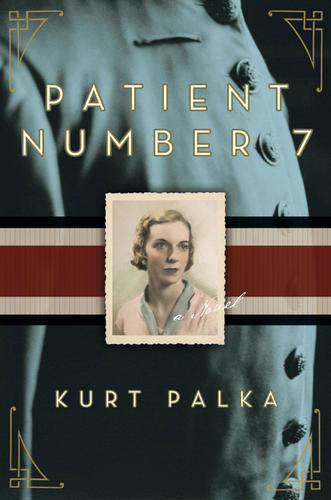
Inspired by a true story and based on a wealth of family documents,
this elegant and compelling novel chronicles the lives of two families from the
1930s through the coming of the Nazis and World War II, and the long, difficult
post-War period to the present. A must-read for fans of Irene Nemirovsky, Hans
Fallada, and Bernhard Schlink's The Reader.
This vividly realized, masterfully executed novel is a window into a
little-explored corner of history. Patient Number 7 is a story
of love between an aristocratic young woman and the cavalry officer -- later
Panzer officer in the German army -- she marries; between friends who help each
other through the Nazi takeover of Austria, the war, and what was sometimes
worse, the "liberation"; between a mother and her two very different
daughters. But it is also the story of a nation's darkest days, and its slow
recovery during one of the most convulsive, violent periods of human history.
Beautifully written, haunting, and ultimately redemptive, it is a work of great
skill and great compassion.
Patient Number 7 gives reader a unique glimpse into how
World War II impacted Austria. Based on family documents, author Kurt Palka has
drilled down into everyday life to demonstrate how all lives were affected by
the Nazi Third Reich.
The main character is Clara Herzog, a young woman from a well-to-do
family who attends university in Austria. As a philosophy student, she is the
student of Sigmund Freud and other notable famous mentors. Against her family’s
urgings, she falls in love and marries a cavalry officer who soon joins the
Panzers in the German army. Left alone, she struggles to raise their two
daughters while war rages around them. She faces numerous conflicts ranging
from losing her position at the university to Third Reich party members to
being raped by a Nazi officer.
Patient Number 7 is about one woman’s endurance and the choices she is
forced to make for herself and her family. What I found most fascinating was how
Nazis slowly infiltrated all businesses, all levels of government, and society
in general creating a wave of fear and slowly taking over all aspects of Austrian
life. This is a unique, compelling, multi-layered novel about an unforgettable
woman!
I LOVE COMMENTS










Published on April 30, 2012 15:57
April 27, 2012
Women and Pants
Women Wearing Pants
Author
gholea
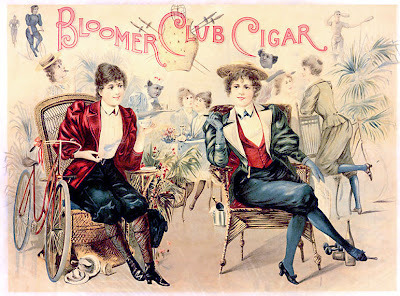
In the Western world, Historically, in that part of the world, women have worn dresses and skirt-like garments while men have worn pants (trousers). During the late 1800s, women started to wear pants for industrial work. During World War II, women wore their husband's pants while they took on jobs, and in the 1970s, pants became especially fashionable for women. Today, pants are worn far more often than skirts by women, and many women wear pants almost all the time.
Although trousers for women in western countries did not become fashion items until the later 20th century, women began wearing men's trousers (suitably altered) for outdoor work a hundred years earlier.
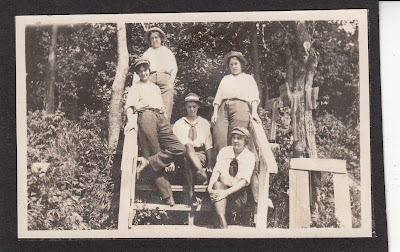
The Wigan pit brow girls scandalized Victorian society by wearing trousers for their dangerous work in the coal mines. They wore skirts over their trousers and rolled them up to their waist to keep them out of the way.
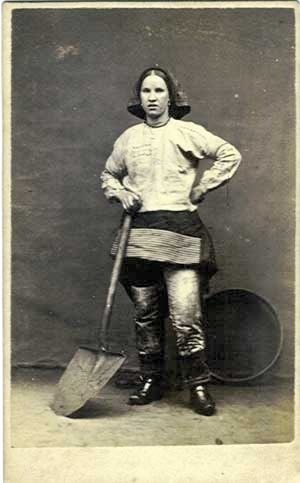
Wigan Pit Row Lass
Women working the ranches of the 19th century American West also wore trousers for riding, and in the early 20th century aviatrices and other working women often wore trousers. Actresses Marlene Dietrich and Katharine Hepburn were often photographed in trousers from the 1930s and helped make trousers acceptable for women.
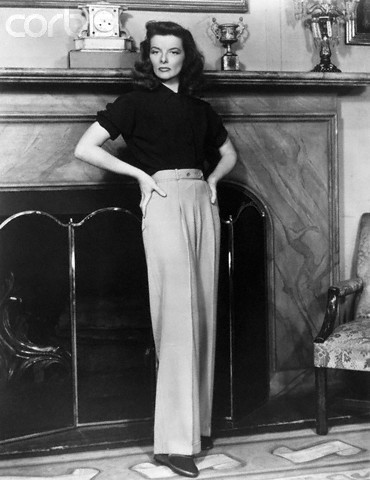
Katherine Hepburn
During World War II, women working in factories and doing other forms of "men's work" on war service wore trousers when the work demanded it, and in the post-war era trousers became acceptable casual wear for gardening, the beach, and other leisure pursuits.
In Britain during the Second World War, because of the rationing of clothing, many women took to wearing their husbands' civilian clothes, including their trousers, to work while their husbands were away in the armed forces. This was partly because they were seen as practical garments of workwear, and partly to allow women to keep their clothing allowance for other uses. As this practice of wearing trousers became more widespread and as the men's clothes wore out, replacements were needed, so that by the summer of 1944 it was reported that sales of women's trousers were five times more than in the previous year.
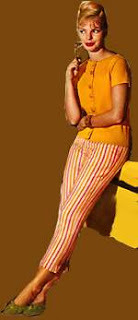
1960's
In the 1960s, Andre Courreges introduced long trousers for women as a fashion item, leading to the era of the pantsuit and designer jeans and the gradual eroding of the prohibitions against girls and women wearing trousers in schools, the workplace, and fine restaurants.
Source:http://www.cheaponsale.com/
Article Source: http://www.articlesbase.com/blogging-articles/women-wearing-pants-620012.html
About the Author
I am awww.cheaponsale.com's author
I LOVE COMMENTS











Author
gholea

In the Western world, Historically, in that part of the world, women have worn dresses and skirt-like garments while men have worn pants (trousers). During the late 1800s, women started to wear pants for industrial work. During World War II, women wore their husband's pants while they took on jobs, and in the 1970s, pants became especially fashionable for women. Today, pants are worn far more often than skirts by women, and many women wear pants almost all the time.
Although trousers for women in western countries did not become fashion items until the later 20th century, women began wearing men's trousers (suitably altered) for outdoor work a hundred years earlier.

The Wigan pit brow girls scandalized Victorian society by wearing trousers for their dangerous work in the coal mines. They wore skirts over their trousers and rolled them up to their waist to keep them out of the way.

Wigan Pit Row Lass
Women working the ranches of the 19th century American West also wore trousers for riding, and in the early 20th century aviatrices and other working women often wore trousers. Actresses Marlene Dietrich and Katharine Hepburn were often photographed in trousers from the 1930s and helped make trousers acceptable for women.

Katherine Hepburn
During World War II, women working in factories and doing other forms of "men's work" on war service wore trousers when the work demanded it, and in the post-war era trousers became acceptable casual wear for gardening, the beach, and other leisure pursuits.
In Britain during the Second World War, because of the rationing of clothing, many women took to wearing their husbands' civilian clothes, including their trousers, to work while their husbands were away in the armed forces. This was partly because they were seen as practical garments of workwear, and partly to allow women to keep their clothing allowance for other uses. As this practice of wearing trousers became more widespread and as the men's clothes wore out, replacements were needed, so that by the summer of 1944 it was reported that sales of women's trousers were five times more than in the previous year.

1960's
In the 1960s, Andre Courreges introduced long trousers for women as a fashion item, leading to the era of the pantsuit and designer jeans and the gradual eroding of the prohibitions against girls and women wearing trousers in schools, the workplace, and fine restaurants.
Source:http://www.cheaponsale.com/
Article Source: http://www.articlesbase.com/blogging-articles/women-wearing-pants-620012.html
About the Author
I am awww.cheaponsale.com's author
I LOVE COMMENTS










Published on April 27, 2012 11:34
Woman and Pants
Women Wearing Pants
Author
gholea

In the Western world, Historically, in that part of the world, women have worn dresses and skirt-like garments while men have worn pants (trousers). During the late 1800s, women started to wear pants for industrial work. During World War II, women wore their husband's pants while they took on jobs, and in the 1970s, pants became especially fashionable for women. Today, pants are worn far more often than skirts by women, and many women wear pants almost all the time.
Although trousers for women in western countries did not become fashion items until the later 20th century, women began wearing men's trousers (suitably altered) for outdoor work a hundred years earlier.

The Wigan pit brow girls scandalized Victorian society by wearing trousers for their dangerous work in the coal mines. They wore skirts over their trousers and rolled them up to their waist to keep them out of the way.

Wigan Pit Row Lass
Women working the ranches of the 19th century American West also wore trousers for riding, and in the early 20th century aviatrices and other working women often wore trousers. Actresses Marlene Dietrich and Katharine Hepburn were often photographed in trousers from the 1930s and helped make trousers acceptable for women.

Katherine Hepburn
During World War II, women working in factories and doing other forms of "men's work" on war service wore trousers when the work demanded it, and in the post-war era trousers became acceptable casual wear for gardening, the beach, and other leisure pursuits.
In Britain during the Second World War, because of the rationing of clothing, many women took to wearing their husbands' civilian clothes, including their trousers, to work while their husbands were away in the armed forces. This was partly because they were seen as practical garments of workwear, and partly to allow women to keep their clothing allowance for other uses. As this practice of wearing trousers became more widespread and as the men's clothes wore out, replacements were needed, so that by the summer of 1944 it was reported that sales of women's trousers were five times more than in the previous year.

1960's
In the 1960s, Andre Courreges introduced long trousers for women as a fashion item, leading to the era of the pantsuit and designer jeans and the gradual eroding of the prohibitions against girls and women wearing trousers in schools, the workplace, and fine restaurants.
Source:http://www.cheaponsale.com/
Article Source: http://www.articlesbase.com/blogging-articles/women-wearing-pants-620012.html
About the Author
I am awww.cheaponsale.com's author
I LOVE COMMENTS











Author
gholea

In the Western world, Historically, in that part of the world, women have worn dresses and skirt-like garments while men have worn pants (trousers). During the late 1800s, women started to wear pants for industrial work. During World War II, women wore their husband's pants while they took on jobs, and in the 1970s, pants became especially fashionable for women. Today, pants are worn far more often than skirts by women, and many women wear pants almost all the time.
Although trousers for women in western countries did not become fashion items until the later 20th century, women began wearing men's trousers (suitably altered) for outdoor work a hundred years earlier.

The Wigan pit brow girls scandalized Victorian society by wearing trousers for their dangerous work in the coal mines. They wore skirts over their trousers and rolled them up to their waist to keep them out of the way.

Wigan Pit Row Lass
Women working the ranches of the 19th century American West also wore trousers for riding, and in the early 20th century aviatrices and other working women often wore trousers. Actresses Marlene Dietrich and Katharine Hepburn were often photographed in trousers from the 1930s and helped make trousers acceptable for women.

Katherine Hepburn
During World War II, women working in factories and doing other forms of "men's work" on war service wore trousers when the work demanded it, and in the post-war era trousers became acceptable casual wear for gardening, the beach, and other leisure pursuits.
In Britain during the Second World War, because of the rationing of clothing, many women took to wearing their husbands' civilian clothes, including their trousers, to work while their husbands were away in the armed forces. This was partly because they were seen as practical garments of workwear, and partly to allow women to keep their clothing allowance for other uses. As this practice of wearing trousers became more widespread and as the men's clothes wore out, replacements were needed, so that by the summer of 1944 it was reported that sales of women's trousers were five times more than in the previous year.

1960's
In the 1960s, Andre Courreges introduced long trousers for women as a fashion item, leading to the era of the pantsuit and designer jeans and the gradual eroding of the prohibitions against girls and women wearing trousers in schools, the workplace, and fine restaurants.
Source:http://www.cheaponsale.com/
Article Source: http://www.articlesbase.com/blogging-articles/women-wearing-pants-620012.html
About the Author
I am awww.cheaponsale.com's author
I LOVE COMMENTS










Published on April 27, 2012 11:34
Blue Asylum by Kathy Hepinstall
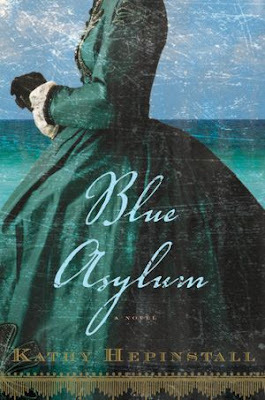
Amid the mayhem of the Civil War, Virginia plantation wife Iris
Dunleavy is put on trial and convicted of madness. It is the only reasonable
explanation the court can see for her willful behavior, so she is sent away to
Sanibel Asylum to be restored to a good, compliant woman. Iris knows, though,
that her husband is the true criminal; she is no lunatic, only guilty of
disagreeing with him on notions of justice, cruelty, and property.
On this remote Florida island, cut off by swamps and seas and military
blockades, Iris meets a wonderful collection of residents--some seemingly sane,
some wrongly convinced they are crazy, some charmingly odd, some dangerously
unstable. Which of these is Ambrose Weller, the war-haunted Confederate soldier
whose memories terrorize him into wild fits that can only be calmed by the
color blue, but whose gentleness and dark eyes beckon to Iris.
The institution calls itself modern, but Iris is skeptical of its
methods, particularly the dreaded "water treatment." She must escape,
but she has found new hope and love with Ambrose. Can she take him with her? If
they make it out, will the war have left anything for them to make a life from,
back home? Blue Asylum is
a vibrant, beautifully-imagined, absorbing story of the lines we all cross
between sanity and madness. It is also the tale of a spirited woman, a wounded
soldier, their impossible love, and the undeniable call of freedom.
The premise of this novel is what
attracted me to it. I thoroughly enjoy reading historical fiction with unique
settings. Blue Asylum, however, has
much more depth than a story set in a mental institution. Certainly, there are
fascinating inmates – the woman who swallows small items, a cruel matron, a
charming woman who imagines her husband is still alive and with her – but the
story is much richer than that. Not only does it depict the powerlessness of
women in that era, but it delves into themes of post traumatic stress syndrome,
tragedy, hope, and resilience. More importantly, at the heart is an endearing
love story.
This novel is believable and
richly detailed with fascinating characters, plenty of heartbreak, and
inspiration.
An Interview with Kathy Hepinstall

1. Welcome, I'm so glad to have this opportunity to chat with you. Can you share with my readers the essence of the story you've penned?
Blue Asylum tells the tale of a plantation wife and a haunted soldier who fall in love in an insane asylum in 1864. That's the basic tale, but within that story there are many themes: forgiveness, letting go of the one you love, breaking free of the past, and the right of every individual to have a voice.
2. You've chosen a very interesting title. What inspired the title? What inspired the book?
The psychiatrist, Dr. Cowell, paints the walls blue to calm the patients. I'm very partial to the color blue. If it stopped existing tomorrow, I would be very sad, and no longer look at the sky. I'd been wanting to set a love story in an insane asylum, and the island of Sanibel inspired me as a setting. It's pristine, calm, and yet vaguely ominous. Still largely unsettled.
3. What makes this book special to you?
It's about people being misunderstood and remaining strong despite circumstances. Also, some of the characters are my friends now. Others, not so much.
4. What makes this a book that people MUST read and WHY?
I'm not sure people must read it but I do believe that lovers of historical fiction will get caught up in it. I think it's an intriguing love story with a unique twist: a woman in a mental asylum loved by both a haunted Civil War soldier, and her own psychiatrist.
5. What sparks your creativity? Any tips to help others spark their own creativity?
The creativity of others - great music, great writing - sparks my own. Also, I like being around playful and curious people. I'd say as advice to always be surprising - make it a habit in your everyday life.
6. What has been the biggest stumbling block in your writing? Can you share some tips to help others get past similar problems?
Well, I would say be careful about your metaphors. For example, that word…Writer's B…. I won't use it because it designates something hard, permeable, something impossible to get through. So I call it Writer's Cloud, or Writer's Air. In this way, the brain receives the message: I can get through this easily. Hope that makes sense.
7. Tell me about the most unusual things you have done to promote your book?
I just took out a full page color ad to Oprah in her hometown paper, the Montecito Journal. The ad said I had buried a book for her, and provided a secret map. So far, no word. So, on to ad #2...
8. Each author is different in the way they create a work of fiction. Please describe for us how you plan or plot a story.
Some of them come from an old news story or something I witnessed. Often they are informed by my own philosophies - for example, The House of Gentle Men was about redemption and the need for forgiveness. I plot the novel out very roughly, but I always write to an outline. Research is definitely a form of creative progress for me - plot points and convergences reveal themselves, as well as metaphors that later prove useful. I I usually try to make things historically accurate unless the story demands a different turn.
9. Authors are very unique in the way they write, the tools they use, when they write, etc. Please describe a typical writing day for you? How do you organize your day?
I do my best writing in the morning but sometimes write all day. I write very fast over a short period of time. Racing through, getting a rough draft done and then go to work on a better draft.
10. What is your current work in progress?
About to start on a novel about two sisters who join Stonewall Jackson's army and fight as men during his eastern campaign.
11. Can you tell us where to find more information about you and your books and how readers can reach you?
www.kathyhepinstall.wordpress.com Has a place there under Bio/Contact to write the author.
12. What would you like our readers to know about you and your writing?
Just how much I appreciate their support and hope they love the novel. And that they can always contact me through my blog with questions or comments. Thanks so much.
BOOK GIVEAWAY
LEAVE A COMMENT FOR A CHANCE TO WIN A COPY OF BLUE ASYLUM
CONTEST OPEN TO RESIDENTS OF CANADA AND THE U.S.A.









Published on April 27, 2012 06:08
April 24, 2012
The Kings' Mistresses by Elizabeth Goldsmith
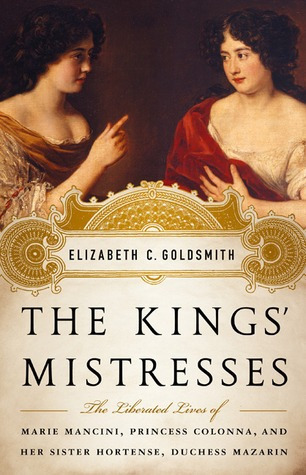
The Mancini Sisters, Marie and
Hortense, were born in Rome, brought to the court of Louis XIV of France, and
strategically married off by their uncle, Cardinal Mazarin, to secure his
political power base. Such was the life of many young women of the age: they
had no independent status under the law and were entirely a part of their
husband’s property once married.
Marie and Hortense, however, had other ambitions in mind altogether.
Miserable in their marriages and determined to live independently, they abandoned
their husbands in secret and began lives of extraordinary daring on the run and
in the public eye. The beguiling sisters quickly won the affections of noblemen
and kings alike. Their flight became popular fodder for salon conversation and
tabloids, and was closely followed by seventeenth-century European society. The
Countess of Grignan remarked that they were traveling “like two heroines out of
a novel.” Others gossiped that they “were roaming the countryside in pursuit of
wandering lovers.”
In the 17th-century, sisters Marie
and Hortense Mancini married into wealth and nobility, but they soon discovered
themselves desperately unhappy with their abusive husbands. Divorce at the
time, was available, but extremely difficult, if not impossible, to acquire and
fraught with scandal. Left with little
choice, the two women fled, at times in each other’s company, and other times
alone. From Italy, France, and England, the women travelled and lived the high
life, visiting and finding refuge in some of Europe’s most elite families. They
found love in the arms of kings. They indulged themselves in love affairs,
gambling, hunting, and art collecting, much to the gossiping delight of the
world that could not help but be fascinating with the wild freedom of these two
women.
But as they moved from home to
home, or castle to castle, their husbands tracked them, thrusting impediments
and threats in their path, forcing them into convents or withdrawing all money,
or entering into negotiations to force them into submission. Somehow, they
managed to dodge the courts and their husband’s attempts to squash their seized
independence.
The author did an impeccable job
of researching and tracking the travels of these two fascinating women. The
book takes us on a journey with them from country to country, court to court,
and home to home. However, it is quite academic in nature and brushes too briefly
over their actual escapades. What I mean by that, is I got a wonderful picture
of their actual travels, but very little about what truly made them notorious,
where they flaunted societal standards, and why the world was so enchanted by
their mischief. Nevertheless, this was a fabulous book that takes the reader
into the courts of kings for a first hand glimpse of the world in 17th
century Europe.
I LOVE COMMENTS










Published on April 24, 2012 09:57
Sisters of Fortune by Jehanne Wake
Jehanne Wake Talks About Sisters of Fortune
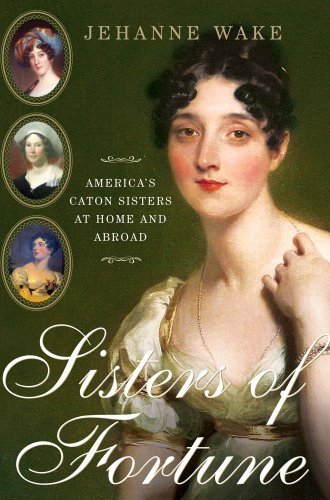
Summary
As gripping as the best historical novel -- an exuberant account of the American sisters who enthralled high society in the wake of Waterloo.
The Caton sisters were Southern belles descended from the first settlers in Maryland, and were expected to 'marry a Plantation'. But they were independent, fascinated by politics, clever with money, romantic in mood. Arriving In London in 1816 the three sisters forged their own destinies in the face of intense prejudice, against both Americans and Catholics.
The widowed Marianne shocked the world by marrying the Wellington's wayward elder brother, the Lord Lieutenant of Ireland, and appearing as a 'Catholic Yankee' among the Protestant Anglo-Irish. Louisa eventually became Duchess of Leeds, and a friend of Queen Victoria, while the sphere in which Bess shone was the stockmarket, as queen of speculators.
Based on intimate unpublished letters, Sisters of Fortune is a brilliant portrait of love between sisters, a most unusual story of money and power and a fascinating glimpse of how these extraordinary women influenced the social and international relations of their time.
Jehanne Wake's Sisters of Fortune is a biographical book about the lives of four sisters: Marianne, Bess, Louisa, and Emily Caton. Granddaughters of Charles Carroll of Carrollton who signed the Declaration of Independence and a Senator Maryland, they were born into a world of wealth and politics.
Of the four sisters, Marianne was the most beautiful and is depicted foremost on the cover. Suffering with asthma, she travelled to the more humid climate of England for health reasons accompanied by her sisters Marianne, Bess, and Louisa. Their sister Emily remained behind.
Needless to say, the sisters took English society by storm and they soon found love, married, while causing a few scandals along the way. Marianne, the great beauty of the trio, married the Marquess Richard Wellesly and became Lady-in-Waiting to Queen Adelaide. Louisa married twice. Her first husband was Colonel Felton Hervey whom she deeply loved. When he died, she married Lord Carmarthen, a future Duke of Leeds. And last, but not least, Bess also found herself married to nobility – George Jerningham, Baron of Costessey Hall.
Beyond capturing the women’s lives, the book does not shy away from depicting anti-American sentiments by the British. When reading the book, it becomes readily apparent that author Jeanne Wake did an incredible amount of research, much of it based on actual letters written amongst Caton family members. It is an incredible story of three educated American women who were able to influence European politics and managed handled financial affairs – rare indeed during the early 18th century. A fascinating, detailed, memoir about three women who reigned victorious under difficult social and gender-based restrictions!
I LOVE COMMENTS










Published on April 24, 2012 08:40
April 23, 2012
Sui Liu and Wu Yan - Ugly Concubines
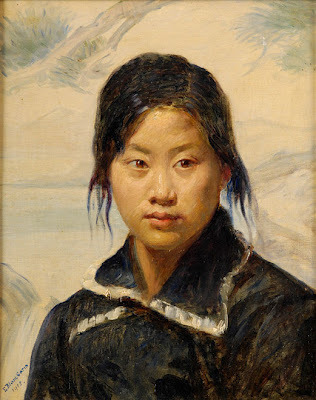
Su Liu
In the period of Qi there was a girl who was born with a tumor in her neck. Her name was Su Liu and this tumor made her slightly disfigured. This caused everyone in her village to stay away and isolate her. Once King Min went on a tour around his kingdom and visited Su Liu's village. All the villagers crowded round the king and stopped their work but Su Liu continued picking mulberry leaves and ignored the crowds.
The King's men saw this and thought ignoring the king was insulting behavior, so she was dragged in front of King Min. The king asked her to explain her actions. She told him that she had learned to concentrate on her task 100 percentage, no matter how small or unimportant that task might seem. The king Min thought that she was a remarkable woman and took her to his court where she proved her worth time and time again. Later in her life the King Min married her and she assisted in the governing of the country and helped to bring peace and prosperity to many of the people in china.
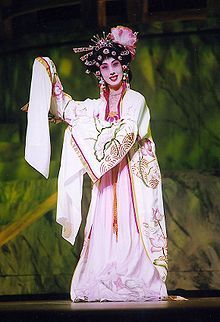
Wu Yan
During the spring and Autumn Period when China was not united there was a girl name Wu Yan. Many describe her as being very ugly with eyes that sank into her face, a flat nose and very dark skin. She was named after the place she was born, Wu Yan.She lived in the Qi state, one of the many reason why the Qi state grow so strong was because any person no matter where that started out in live could be promoted to a position of power and money. As Wu Yan was viewed to be so ugly she lived alone until she was 40.
During her life there were many wars with the other states and any civilian were encouraged to come and offer advice and help their country. Wu Yan summoned up her courage and went to see the king of Qi. When she was permitted into the kings audience she told King Xuan " Our country is in grave danger". King Xuan was shocked at these words as he was unaware of any danger to his country and didn't understand how a lowly peasant would know of these dangers when he was unaware. Wu Yan continued and said that the states of Qin and Chu and both progress and their armies are getting stronger. Our state is on a knife's edge, one side is life and the other is death but you are unaware of it, as you are stuck in your luxurious life style.
King Xuan was dumb struck as this words and dismissed her. However he continued to review her words and took her advice. He withdrew from his sheltered and luxurious life style and concentrate on improving the state of Qi. He looked for Wu Yan and offered her to be his concubine and so she is famously known as the "ugly Concubine".
Article Source: http://EzineArticles.com/?expert=Nath...
I LOVE COMMENTS










Published on April 23, 2012 11:14
April 20, 2012
The Most Hated Woman in Mexico by Colin Falconer
Author Colin Falconer is back to share a post about a fascinating Mexican woman of history depicted in his best-selling novel, Aztec. If you haven't had a chance to read this book, you must. It's a definite page turner with plenty of shock and awe to rivet you to the end. Following is the guest post. Oh, and there's a link to a previous post contained within. When you get to it, check it out. You'll laugh till you hurt!
THE MOST HATED WOMAN IN MEXICO
Hernan Cortes was probably one of the greatest of the conquistadores – which is a back handed compliment in a way, like being the best of the Nazis or being named Terrorist of the Year. He was a man of ruthless genius, a Christian crusader possessed of unparalleled greed, even for those times – but his achievements were breath-taking.
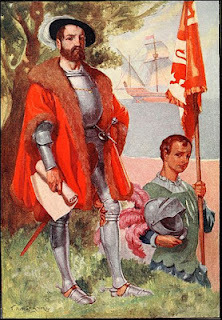
He won a land of almost limitless resource for Spain with an army of less than five hundred Spaniards, not all of them soldiers and not all of them loyal, while ostensibly on a simple scouting mission from Cuba.
He did not defeat the Aztecs with Spanish force of arms – he was five hundred men against a nation of a million – but with an astonishing bluff. He took the pot and the game with nothing in his hand. Through good fortune, steely determination, and the help of a Mexican slave girl he achieved what would otherwise have been considered impossible.
It is one of the great stories of history, a triumph of human endurance and determination, notwithstanding that Cortes’s eventual success was an unmitigated disaster for the indigenous population and resulted in unimaginable misery for hundreds of thousands of people.
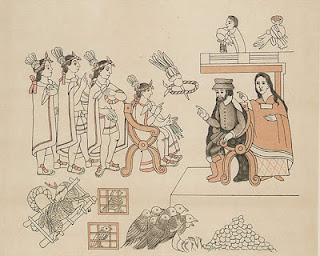
The story of Hernan Cortes is the story of a woman named Malinali. Her exact origins are unclear –she was thought to have been a Mayan princess by some – but her place in Mexican history is unparalleled. For without her, Cortes would have got no further than the beach.
Her name was corrupted by history to Malinche; even today the word malinchista is shouted across the floor of the Mexican parliament as a deadly insult – it means a traitor to the Mexican people.
Yet was she the monster that the Mexicans make her out to be?

There is only one person who ever knew the truth and that was Malinali Tenepal herself – La Malinche. Both concubine and translator to Cortes, her motives and what she said and how she said it will always be a matter of debate - it is what makes hers such a gripping and intriguing story. It is not about the battles but the love affair, one of the most extraordinary pairings in all history.
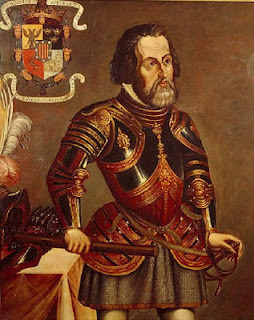
Not everyone in Mexico agrees with me on my interpretation of Malinali – but then they don’t agree with each other either. As with all history, there will always be a thousand versions, and no one can ever say which one is the true one.
But what is certain is that in almost every contemporary drawing and painting she is at Cortes' side, whispering in his ear. She was the only one who ever knew what was being said by both sides, the only one who spoke both Spanish and nahuatl, the language of the Aztecs. She was the only one who could have made the bluff work.
She was also the only one to share Cortes' bed. Did she love him? No one can say. Did he use her for his own purposes and then cast her aside? Of course he did. He was only ever interested in gold and glory.
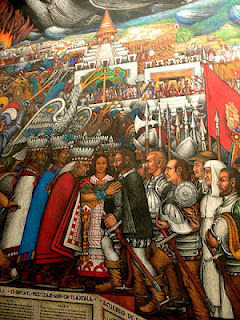
Fittingly perhaps, Cortes' life after the conquest was one of frustration and humiliation. History has not been kind to him either. I spent the better part of an afternoon trying to track him down. I finally found him not far from the Plaza Major in the Church of Jesus Navareno. He is walled up in a casket by the altar and you have to peer very hard to make out the plaque let alone the inscription. That's how much they think of him now.
He crumbles to dust in the place where he first met the Aztec emperor Motecuhzoma. And Malinali?
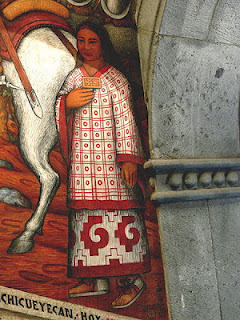
No one knows what became of her. It is believed she died an old woman in Spain. Cortes showed her his gratitude by marrying her off to someone else. Her name is still reviled in Mexico. Foreign authors who dare write her story still get assaulted with man bags (Click here - This is the link - read it for a belly laugh!).)
But for all that, her tale, and that of the conquistadores, remains one of the most intriguing and tragic sagas in history. I still believe she could not have foreseen the terrible cataclysm she unwittingly engineered. But if you're ever in Mexico City, don't quote me on that.
If you do, watch out for man bags.
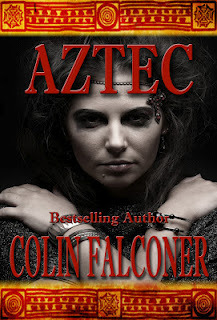
Website http://www.colinfalconer.net
BLOG http://colin-falconer.blogspot.com
Twitter
http://twitter.com/@colin_falconer
buy AZTEC ON KINDLE US or KINDLE UK
I LOVE COMMENTS











THE MOST HATED WOMAN IN MEXICO
Hernan Cortes was probably one of the greatest of the conquistadores – which is a back handed compliment in a way, like being the best of the Nazis or being named Terrorist of the Year. He was a man of ruthless genius, a Christian crusader possessed of unparalleled greed, even for those times – but his achievements were breath-taking.

He won a land of almost limitless resource for Spain with an army of less than five hundred Spaniards, not all of them soldiers and not all of them loyal, while ostensibly on a simple scouting mission from Cuba.
He did not defeat the Aztecs with Spanish force of arms – he was five hundred men against a nation of a million – but with an astonishing bluff. He took the pot and the game with nothing in his hand. Through good fortune, steely determination, and the help of a Mexican slave girl he achieved what would otherwise have been considered impossible.
It is one of the great stories of history, a triumph of human endurance and determination, notwithstanding that Cortes’s eventual success was an unmitigated disaster for the indigenous population and resulted in unimaginable misery for hundreds of thousands of people.

The story of Hernan Cortes is the story of a woman named Malinali. Her exact origins are unclear –she was thought to have been a Mayan princess by some – but her place in Mexican history is unparalleled. For without her, Cortes would have got no further than the beach.
Her name was corrupted by history to Malinche; even today the word malinchista is shouted across the floor of the Mexican parliament as a deadly insult – it means a traitor to the Mexican people.
Yet was she the monster that the Mexicans make her out to be?

There is only one person who ever knew the truth and that was Malinali Tenepal herself – La Malinche. Both concubine and translator to Cortes, her motives and what she said and how she said it will always be a matter of debate - it is what makes hers such a gripping and intriguing story. It is not about the battles but the love affair, one of the most extraordinary pairings in all history.

Not everyone in Mexico agrees with me on my interpretation of Malinali – but then they don’t agree with each other either. As with all history, there will always be a thousand versions, and no one can ever say which one is the true one.
But what is certain is that in almost every contemporary drawing and painting she is at Cortes' side, whispering in his ear. She was the only one who ever knew what was being said by both sides, the only one who spoke both Spanish and nahuatl, the language of the Aztecs. She was the only one who could have made the bluff work.
She was also the only one to share Cortes' bed. Did she love him? No one can say. Did he use her for his own purposes and then cast her aside? Of course he did. He was only ever interested in gold and glory.

Fittingly perhaps, Cortes' life after the conquest was one of frustration and humiliation. History has not been kind to him either. I spent the better part of an afternoon trying to track him down. I finally found him not far from the Plaza Major in the Church of Jesus Navareno. He is walled up in a casket by the altar and you have to peer very hard to make out the plaque let alone the inscription. That's how much they think of him now.
He crumbles to dust in the place where he first met the Aztec emperor Motecuhzoma. And Malinali?

No one knows what became of her. It is believed she died an old woman in Spain. Cortes showed her his gratitude by marrying her off to someone else. Her name is still reviled in Mexico. Foreign authors who dare write her story still get assaulted with man bags (Click here - This is the link - read it for a belly laugh!).)
But for all that, her tale, and that of the conquistadores, remains one of the most intriguing and tragic sagas in history. I still believe she could not have foreseen the terrible cataclysm she unwittingly engineered. But if you're ever in Mexico City, don't quote me on that.
If you do, watch out for man bags.

Website http://www.colinfalconer.net
BLOG http://colin-falconer.blogspot.com
http://twitter.com/@colin_falconer
buy AZTEC ON KINDLE US or KINDLE UK
I LOVE COMMENTS










Published on April 20, 2012 11:35
April 18, 2012
To Take Her Pride by Anne Brear
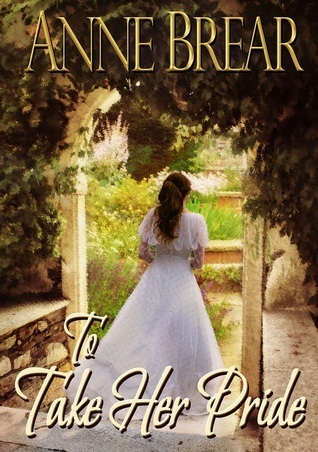
Beautiful prose and an exquisite read!
In 1898 Yorkshire, Aurora
Pettigrew has it all, a loving family, a nice home, a comfortable life. She’s
waiting for the right man to offer her marriage, and the man for her is Reid
Sinclair, heir to the Sinclair fortune and the love of her life. But, Reid’s
mother, Julia, is against the match and her ruthlessness unearths a family
secret that will tear Aurora’s world apart. Unwilling to bring shame on her
family and needing answers to the allegations brought to light by Reid’s
mother, Aurora begins a long journey away from home. She leaves behind all that
is familiar and safe to enter a world of mean streets and poor working class.
Living in the tenements of York, surrounded by people of a class she’d never
mixed with before, Aurora struggles to come to terms with the way her life has
changed. By chance, she reconnects with a man from her past and before he
leaves with the army to war in South Africa, he offers her security through
marriage. Aurora knows she should be happy, but the memory of her love for Reid
threatens her future. When tragedy strikes, can Aurora find the strength to
accept her life and forget the past?
My review
I have been an avid follower of Anne Brear for many years and have had the
pleasure of reading almost all of her novels. I was eager to read this one, confident
that it would be as impressive as the others. This book exceeded my
expectations and is one of favourites.
The story takes place in Yorkshire England during the late 19th
century. At the heart of this tale is a young woman named Aurora, a young woman
of comfortable means who is in love with Reid, a young man of privilege, who
lives next door. Conflict arises when Reid’s mother, Julia, who believes Aurora
is unsuitable for her son because her family is newly wealthy, sets out to
research the family’s past secrets. She manages to discover a secret that
devastates Aurora’s life and forces her to live in poverty.
As expected, To Take Her Pride is the kind of story that moves
the reader through a realm of emotions. Complex, realistic characters, a rags-to-riches
theme, and a forbidden love element, kept the plot moving at a good clip with
unexpected twists along the way. The reader is taken on an emotional journey
through historical York where the author’s attention to detail and historical
accuracy truly makes the story and characters feel authentic.
This novel is both heart-warming and heart-wrenching. It depicts
England’s class system in an unbiased, true manner. The author plumbs the
depths of her characters, making them multi-dimensional, imperfect, and fascinating.
I could not put this book down and it kept me reading long into the night. If
this is the first book by Anne Brear (formerly Anne Whitfield) that you’ve
read, rest assured that it will not be the last. You’ll become a collector like
me! Get this book, sit back, and enjoy beautiful prose and an exquisite read.
I LOVE COMMENTS










Published on April 18, 2012 15:56
April 13, 2012
Wang Zhaojun and Cai Wenji

Wang Zhaojun
In 33Bc during the Han dynasty there was a policy of diplomacy with the Huns, making sure that the Han dynasty and the Huns were on friendly term. This policy involves marring high class Chinese ladies with the Hun nobility so to cement the relationship of the 2 parties. Many women were forced to marry the Hun nobility but only one saw it as a positive opportunity and openly offered herself to this exchange. Her name was Wang Zhaojun and was described as one of the "Four greatest beauties" in Chinese history. The Khan of the Huns personally came to Chang an city the then capital city and asked for a court lady. Wang Zhaojun offered herself when all the other court ladies refuse because it meant leaving the known, their family and a pleasant life at court.
However unlike the Han dynasty the wife of the Kahn had a great influence and Wang Zhaojun managed to use this influence to continue the good relations between the Han dynasty and Huns. During her life the Hans and the Huns never had a war.
[image error]
Cai Wenji
A famous musician with great knowledge and elegancy, Cai Wenji was famous in the eastern Han dynasty for her musical talent and skill in calligraphy. She broke out of the conformed role of the female in ancient china and managed to get status and riches. Her life changed one night at the age of 6 when she was woken up by her father, who also was a musician, playing music. She listen intently as her father,Cai Yong, played a stringed instrument. Suddenly the music stopped with a awful sound, as one of her father's strings broke. Cai Wenji went to her father and proclaimed that the second string must have been broken. Cai Yong was shocked to see his daughter up and the late hour but also to see her guessing correctly at the string that was broken. Her Father first thought that she must have been lucky, so he broke another string and tested her again.
Again Cai Wenji told her father which string was broken. Her father gathered all the instruments in their house and spent the rest of the night testing her musical talent. In the morning Cai Yong made a decision to teach Cai Wenji everything he knew about music. Due to her great talent and her father's training Cai Wenji went on to become a famous musician.
Article Source: http://EzineArticles.com/?expert=Nath...
Article Source: http://EzineArticles.com/4974889
I LOVE COMMENTS










Published on April 13, 2012 10:50



